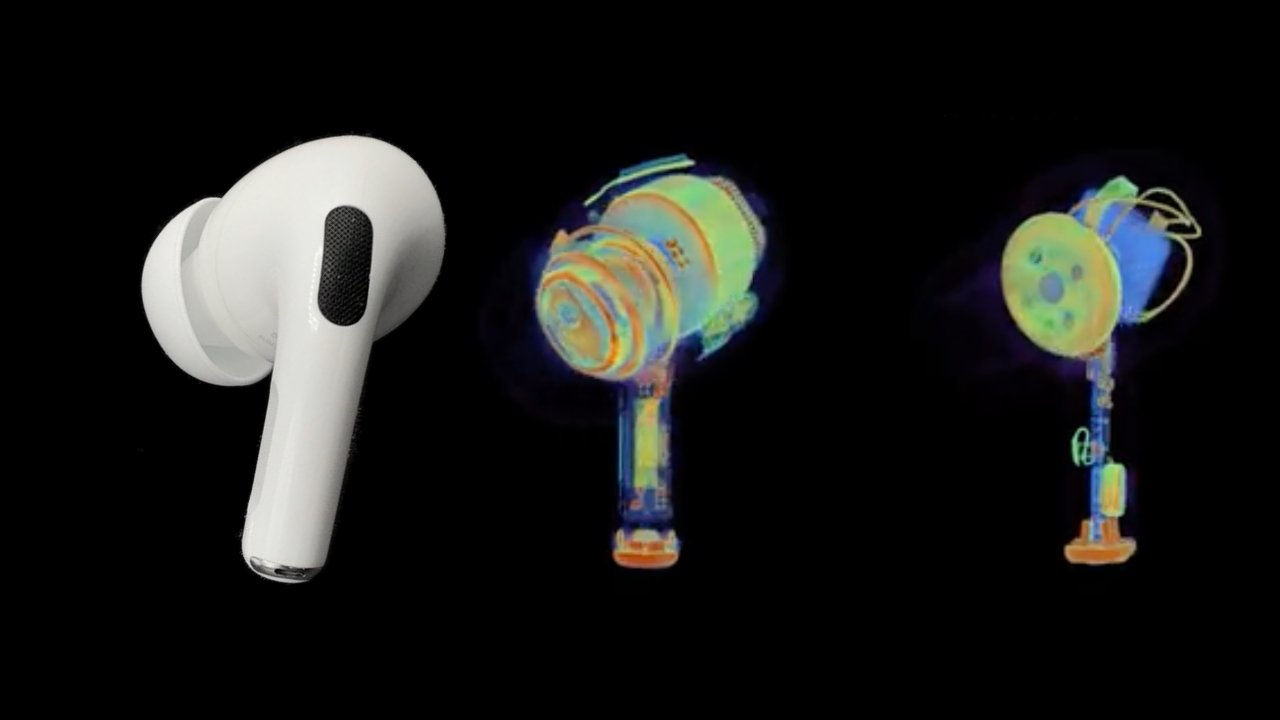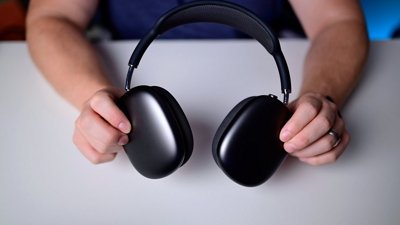A series of CT scans of both real and fake AirPods has shown just how well made Apple's ones are, and how poor the counterfeits can be.
It's not like buying a knock-off designer handbag where the difference from the real one is that the fake will only last a week. With AirPods, the instant you put them in your ears, the audio difference is unmistakeable.
Counterfeiters rely on users having not heard real AirPods before buying, or not trying them out before the fakers get away. There are also those buyers who just want to look like they're wearing AirPods and probably never try playing music through them.
While Apple has never once been described as selling anything remotely cheap, it doesn't skimp on its engineering and its components. So it's easy to imagine counterfeiters being able to sell fake AirPods for a lot less than Apple's real ones, by doing exactly tha t skimping.
Now the same company that revealed the intricacy of Apple's Thunderbolt 4 cable has turned its CT scanner onto both real and fake AirPods, to show just how much skimping goes on.
"[An AirPod Pro is] a marvel of miniaturization," writes Lumafield's Jon Bruner at the start of a Twitter/X thread showing the CT scans. "Everything is packed into the curved enclosure efficiently with tightly integrated flexible PCBs."
"The fakes have a lot less going on," he continues. "Components are connected by wires, not flexible PCBs. You won't find wires like this in any modern mobile Apple product."
The world is full of counterfeit Apple products. We CT scanned two fake AirPods and compared them to the real thing pic.twitter.com/VFWvAwUrox
— Jon Bruner (@JonBruner) November 7, 2023
Bruner points out how how the wires are even soldered poorly in the fakes. The real difference from Apple comes with the sheer number of components.
"A real AirPod Pro has 3 MEMS microphones: one that points outward, one at the base of the stem between the charging contacts that points downward, and one in front of the driver that points into the ear canal and drives adaptive real-time EQ," writes Bruner. "The fakes have just one microphone each: a rudimentary off-the-shelf electret condenser on the stem."
Then there are "the lack of magnets, lower-quality plastic, and smaller batteries," plus fake AirPods are weigh much less than real ones. "To make up for the difference, their cases have weights!"
It's detail like this that helps with spotting fakes in the real world. As interesting as seeing the insides through a CT scan is, in practice it's going to be the weights and the sound quality that will alert a buyer to a fake.
That again requires them to have at least a passing familiarity with the real AirPods. But then ultimately, you don't need a lot of experience to recognize a problem when something is marked as 80% off the Apple retail price.
 William Gallagher
William Gallagher







-m.jpg)






 Amber Neely
Amber Neely
 Marko Zivkovic
Marko Zivkovic
 Malcolm Owen
Malcolm Owen




 Andrew Orr
Andrew Orr







3 Comments
I love Apple AirPods. I argue that this may be the best invention from Apple... But! Big but! for all the genius of this product, they are way overrated. Sickly overrated. Excited, I bought the first generation of Airpods before the fifth. they cost €180. I enjoyed them for a year, and then after a year and a half, my left earpiece broke. Of course, the warranty has already expired. I found out that they are not serviced and that Apple wants more than 104 euros for a replacement handset! For the fucking left earpiece!!!! I was like, screw this damn great shit. I bought a fake for €30. I told myself, if it lasts at least a year, I won't regret this change, just like I regretted €180 after a year! You know what? A fake, albeit without any fancy gimmicky features, but with perfectly good, if not identical, sound, it worked for almost two years! then the left earpiece beeped again. Again, Fuck Off Apple for such a great price stretch. What good are all these wonderful Airpods functionalities if the fucking battery lasts less than the copy! And then you want to sell it to me for a ridiculously high price! That's why I buy fakes, or rather, similar but cheaper headphones...and they're BLACK! BlackPods ;)
The fakes are garbage, you’re deluding yourselves if you think they’re just as good. The real AP features aren’t “gimmicky”, they’re excellent. The ANC and new hybrid mode are top notch, and the sound is excellent for a bud.